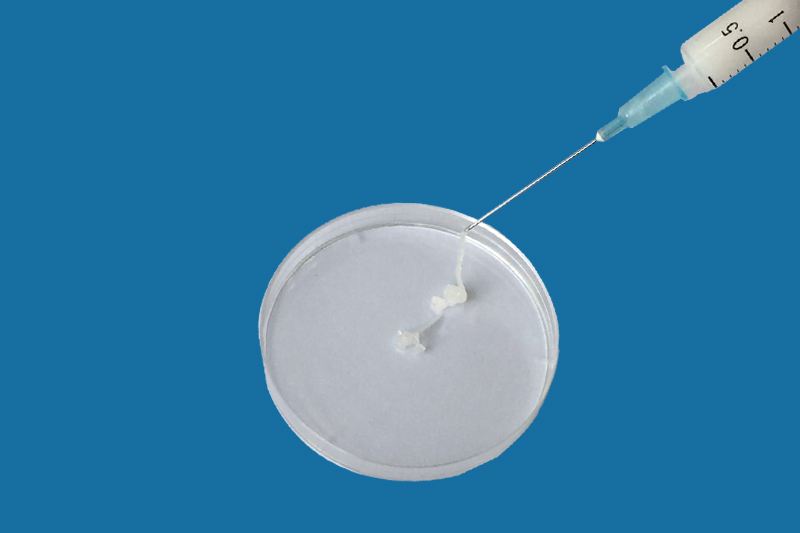
A hydrogel is a three-dimensionally structured polymer with high water content, internal porous structure, and concentration-dependent stiffness. The interconnected porous structure inside the hydrogel provides channels for the transport of water, nutrients and drugs.
Hydrogels can be classified according to their material composition, fabrication conditions, and response to different stimuli. Colloids can be divided into physical and chemical colloids according to the way their substances are composed. Physical hydrogel is a simple entangled system, while chemical hydrogel is a cross-linked polymer, a copolymer obtained by cross-linking. Chemically cross-linked hydrogels can incorporate hydrophobic polymer units into hydrophilic polymers to form an interpenetrating network structure. There is a great demand for how to develop functional hydrogels by introducing cross-linked structures in new ways.
In order to improve the properties of silk protein hydrogels, conventional methods often cannot meet the mechanical and mechanical properties required for different biomedical applications. Recently, fibroin-based hydrogels have also been widely used for 3D bioprinting, but the introduction of physical or chemical covalent crosslinks often negatively affects rheological properties, printability, and biocompatibility. Silk protein isolated from silk is a widely used and studied biopolymer, and it is an effective biomaterial widely used in various biomedical applications. When fibroin is incorporated into various body structures, it exhibits very good mechanical properties. Under different conditions, it can form aqueous solutions, films, microspheres, gels, micro- and nanoparticles, monofilaments, nanotubes, and 3D porous structures, among others.
Under this circumstance, a method of manufacturing silk protein hydrogel by introducing other bioactive molecules by photocuring was developed. Riboflavin (vitamin B2) can act as a photosensitizer, which can generate oxygen free radicals to introduce covalent cross-links in the silk protein polymer chain. Professor Lu Shenzhou from Soochow University and others introduced a gel structure on silk fibroin through surfactant, and then mixed silk fibroin and poly-N-vinylpyrrolidone, and photopolymerized and cross-linked to obtain an interpenetrating network structure. Hydrogels. The photocured silk protein hydrogel exhibits better physical and mechanical properties, excellent biocompatibility, elasticity and high transparency.
The first step in making silk protein hydrogel is to prepare silk protein. The cocoons were cut into small pieces and degummed by boiling three times in 0.01M Na2CO3/NaHCO3 solution. After washing, drying, and dissolving in LiBr with a concentration of 9.3M, it underwent other post-treatments. The solution was finally centrifuged at 6,200 rpm for 15 minutes to remove impurities and precipitates.
The fibroin concentrations of the formula used in the experiment were 10, 20, 30, 40 and 50 mg/mL, the riboflavin concentration was fixed at 0.1 mM, and the horseradish peroxidase (HRP) concentration was fixed at 10 U/mL. An oxygen generator is used to continuously deliver oxygen to the beaker containing the solution. The wavelength of the curing light source is 365 nm and the power is 300W/m². The exposure time to prepare the hydrogel was 30 min.
